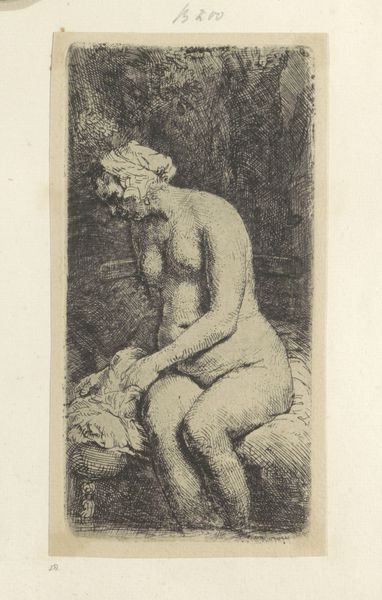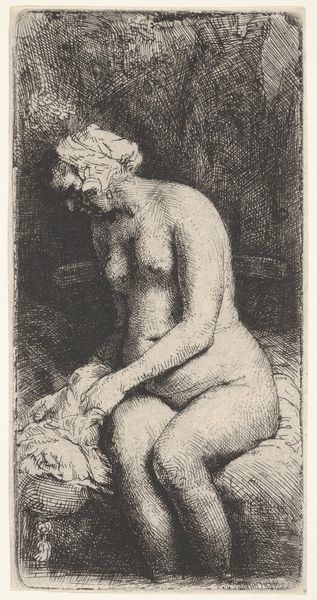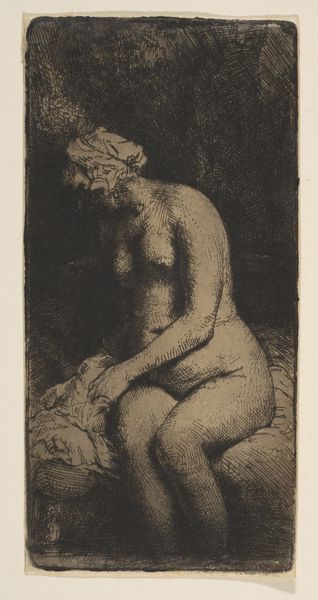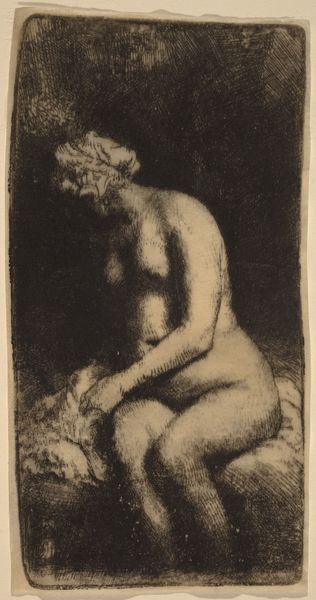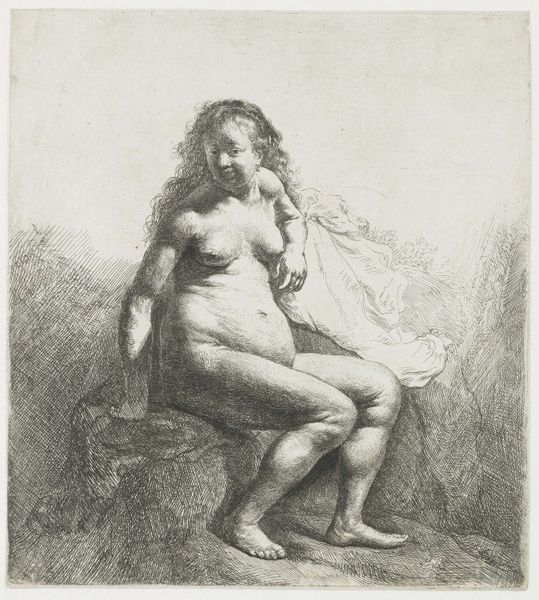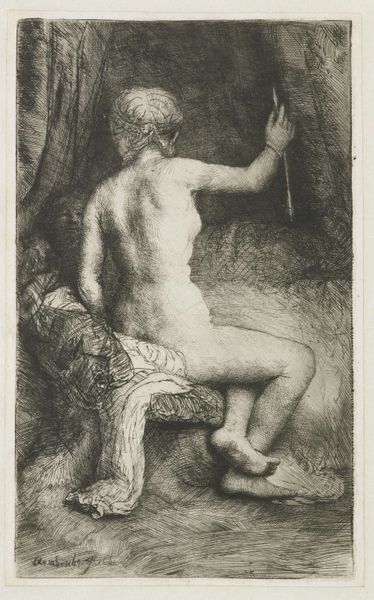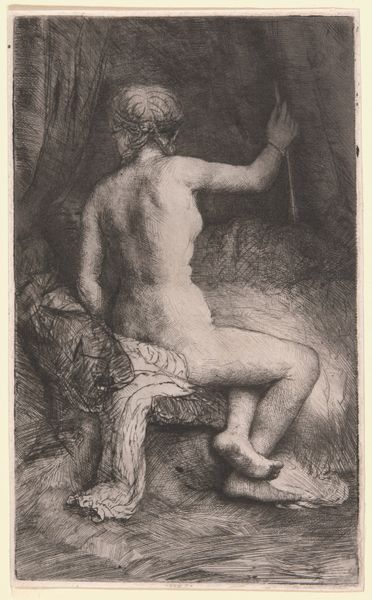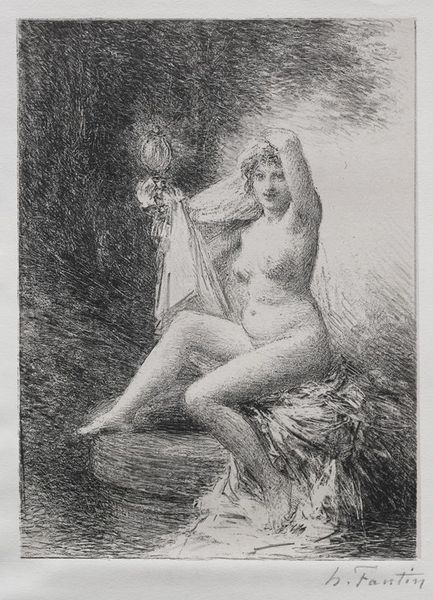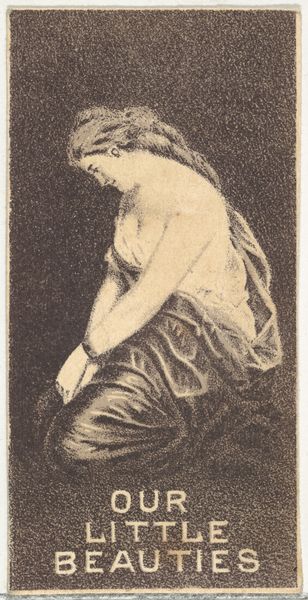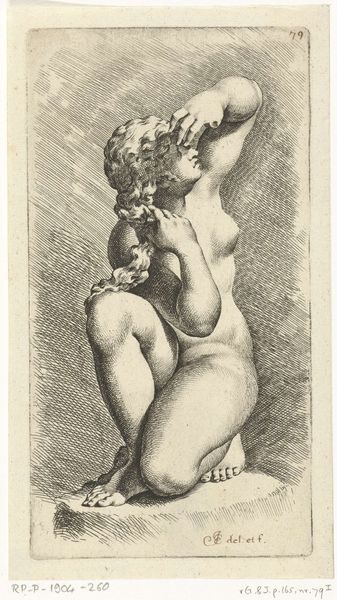
Dimensions: height 159 mm, width 80 mm
Copyright: Rijks Museum: Open Domain
Editor: This is "Woman bathing her feet at a brook", an etching by Rembrandt van Rijn made sometime between 1658 and 1906. I find the linework fascinating, the density of marks giving the figure real weight. What strikes you about this piece? Curator: Well, given my interest, what grabs me is Rembrandt’s choice of etching – a printmaking process. It was relatively new at the time, allowing for wider distribution than, say, painting. We see how art is entering a new system of exchange and consumption, even back then. Consider the labor involved; the preparation of the plate, the biting with acid, the printing itself – it democratizes the image by shifting its production. Editor: That's interesting, because I mainly focus on the aesthetics of a work and never thought about the democratizing nature of the method. Curator: Indeed! Also, look at the woman's pose; it is incredibly unidealized, frankly kind of awkward. By representing her with such candor and realism rather than idealization, is Rembrandt making a social commentary on beauty standards? Or perhaps simply reflecting the lives and experiences of the working class, or women of his community? It shows Rembrandt was less focused on portraying wealth. Editor: So you are thinking about what’s materially present, and in what kind of social context this nude emerged. Does this break with traditions do something to advance his position? Curator: Precisely. By focusing on labor, Rembrandt may have inadvertently challenged traditional class-based divisions of subject matter as it had become about his artistic agency as it was about the sitter themselves. What were your initial reactions, by comparison? Editor: I initially focused on how her bowed head gives the piece a pensive mood, like she is burdened by the weight of the day. But, now that you mention production and material implications, I am curious if that pose meant she might not have been paid? Curator: Food for thought! I've learned to explore materiality, labor, and socioeconomic factors of pieces like this.
Comments
No comments
Be the first to comment and join the conversation on the ultimate creative platform.
